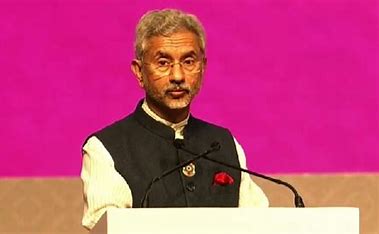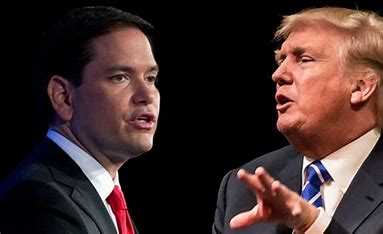
In the Union Budget, the fiscal arithmetic aside, the policy theme remains similar to that of the last couple of years, when higher capex allocation was one of the key thrusts of the budget, with focus on building domestic manufacturing capacity in the medium term. This implies a larger fiscal multiplier on employment and growth, and will support crowdingin of the still-lacking private capex. The capex/GDP ratio has further gone up, to 3.3% of GDP from 2.7% in FY23RE, and is almost double that of pre-pandemic levels.
However, such numbers include conditional capex allocation of 0.5% of GDP to States (vs 0.3% in FY23RE), through an extension of the 50-year interest-free loan scheme.
(i) Much-needed public capex to crowd-in private players While private capex dearth continues, the public sector takes on the baton in the hope of crowding-in private-sector players, with an emphasis on boosting investments in infrastructure and encouraging public-private partnership.
(ii) But private capex needs a consumption push too The continued skew in favor of capex over revex spend (adjusted for high interest payments, which is at a high of 3.6% of GDP) is commendable. But we reckon that in India, private investment is endogenous in nature – it first needs demand to fire and then utilization to rise.
(iii) Push for a transparent tax regime The government has shown clear preference for a more transparent tax regime, particularly in direct taxes, hence, the proposals to tax-payers for choosing the new streamlined income tax regime by putting more money in their hands. The tax slab revision could spur some consumption spending, especially for those at the lower strata of the income pyramid. With regard to capital-gains tax, there were no changes this year, but we believe that the rationalisation of the capital-gains tax structure remains a mediumterm goal of the government.
Separately, tax compliance has been made easier for some segments like MSMEs. There has also been a reduction in the number of basic customs duty rates on goods, other than textiles and agriculture. This also includes import duty cuts for green-energy related imports of capital goods, EVs and electronics manufacturing sub-parts. A simplified tax structure with fewer tax rates helps in reducing the compliance burden and improving tax administration.
(iv) Nominal GDP assumptions and divestment kept modest, but risks exist The nominal GDP growth assumption is in line with our estimate at 10.5% YoY, while direct and corporate tax growth, also at 10%-11%, looks manageable as well. However, there was not much stress on innovative reforms, no aggressive asset sales in the form of existing functional infrastructure monetization, and thinking that goes beyond strategic sales of core and non-core assets, among others. ASSESSING THE FY24 FISCAL MATH Fiscal strategy aside, the arithmetic becomes crucial to gauge the credibility of fiscal outcome and viability of funding amid consolidation.
Near-reasonable revenue projections for FY24E, but mild risks exist: Tax revenue buoyancy has been strong in FY23, after having seen the strongest print in FY22. Healthy tax buoyancy has acted as a key fiscal buffer in FY23, with ~71% of the gross tax collection target (RE) already met in the first nine months–matching the pace seen last year, and far higher than historical trends. What we saw was the reflection of the non-linear relationship between economic activity and taxes. Growth in taxes has been significantly outdoing nominal GDP growth, which could be attributed to recovery in the formal sector and the broader economy in general in FY22/23.
(i) Healthy tax buoyancy assumed FY24E gross tax revenue shows modest growth at 10% vs nominal GDP growth of 10.5%. This comes after a robust 22% growth in FY23RE. However, as we mentioned earlier, tax buoyancy may be less robust, with relatively slower growth momentum in FY24. DIRECT TAXES POISED TO GROW 10% IN FY24BE Helped by 11% growth in corporate and income taxes each. The Government also rationalised income tax stabs under the new tax regime, with tweaks to encourage individuals to move towards the new tax regime, and to provide assistance to the middle class, while the maximum marginal rate has also been reduced, to 39% from 42.7%, to give relief to the highest income strata. While the government is foregoing effective revenue of Rs 350bn, this could have a consumption multiplier effect, albeit at the margin, in an economy that is seeing a fading consumption growth.
(i) FY24 divestment p r o c e e d s n o t t o o aggressive The FY24 divestment target is a modest Rs 610bn. It appears there has not been much effort toward innovative asset monetization. However, we believe that going ahead, some of these windfall gains may face pressure from stake sale of large government holdings, which are mainly concentrated in commodity companies and utilities. DFI traction has not really taken place since the FY22 budget.
(ii) On non-tax revenues: The RBI’s lower surplus and limited gains on telecom windfall from 5G spectrum have meant that the budgeted revenue kitty has been lower in FY23RE. Some telecom companies are paying their 5G spectrum dues in annual installments which has driven the increase in the FY24BE for non-tax revenues.
(iii) Expenditure side clearly prioritizes Capex over Revex With FY23 expenditure currently tracking 71% of total budgeted expenditure vs 72% in the same period last year, the slight downturn is largely due to a slowdown in capex in December, while revex has sustaned its momentum. Overall, the higher incremental dole payouts than budgeted, on food and fertilizer subsidies, have implied FY23 total expenditure overshooting the budget by Rs2.4tn (0.9% of GDP), even as there may have been expenditure savings from other ministries.
(iv) The capex focus has remained intact despite a ~Rs220bn lower print in FY23RE. The government aims to complete targeted RE capex spend of Rs 7.28tn in FY23, impyling ~Rs795bn monthly capex spend in Q4FY23 (Rs544bn per month average so far), which seems a tad optimistic. That said, the same situation had occurred in FY22, but Q4 saw a healthy catch up to match the FY22RE target.
(v) The following year may not be any different. The FY24 budget has yet again shown an inclination toward capital spending in order to boost overall growth. Overall expenditure is targeted to increase by 7.5%YoY in FY24BE (Rs45.03tn), with the government budgeting massive capex worth Rs10.01tn for FY24, a 37% increase over FY23 RE (and 33% over FY22BE). Revenue expenditure is projected to increase by 1.2% in FY24, lower than the 8.1% recorded in FY23RE. NET AND GROSS MARKET BORROWINGS TO BE ~RS11.8TN AND RS15.4TN IN FY24 As per the budget, 66% of the fiscal deficit will be funded via net G-Sec issuance (Rs11.8tn vs11.08tn in FY23), which is higher than even the 57% in FY21, when fiscal deficit had surged to 9.2% of GDP.
Gross market borrowing for FY23 is pegged at Rs15.4tn, in line with our estimate and the revised FY23 estimate of Rs14.2tn. As we argued in our pre-budget note, the G-Sec redemption of Rs4.4tn also included Rs781bn worth of Covid back-to-back loans, with the compensation cess amount collected transferred to States, to be used to settle the redemption of these loans. While the drawdown of cash balance stays negative in FY24, the government also continues to tap into other sources of financing like NSSF. Net small savings led funding increased by nearly Rs135bn in FY23RE vs BE, though small savings funds seem to be running lower than a year ago by 9.5%.
FY24BE also keeps the dependence high, at 26.8% (albeit much lower than the highs seen in FY22 at 35%). A decade ago, this print was less than 2% of the fiscal deficit. It needs to be seen if NSSF, which has benefited from budgetary incentives, holds up as expected, with bank savings rates catching up. Madhavi Arora is the lead economist at Emkay Global’s institutional equities desk. She has over 13 years of rich experience as a macroeconomist. Harshal Patel is a research associate in economics at Emkay, Global.















